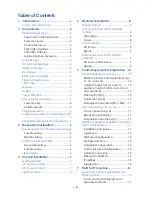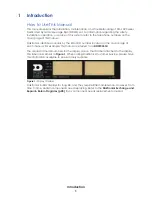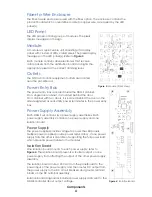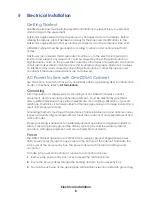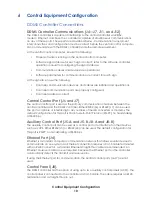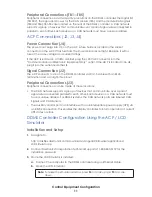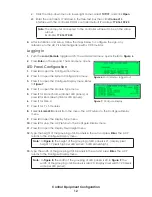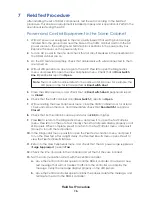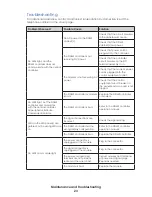
Control Equipment Configuration
10
6
Control Equipment Configuration
DDMS Controller Connections
DDMS Controller Communications (J4—J7, J11, and J12)
The DDMS controller is capable of interfacing to the central controller via RS232,
modem, Ethernet, and fiber. The controller is capable of simultaneous communications
on any of these ports. These ports are described below. Communications equipment
interconnections and configuration must be correct before the central control computer
can communicate with the DDMS controller and other remote equipment.
At the central control computer, ensure the following:
• Proper software is running on the central control computer.
• Software sign database for each sign is correct; refer to the software controller
operation manual for configuring the sign database.
• Communication cables and devices are operational.
• Software parameters for communications are correct for each sign.
At the sign site, ensure the following:
• Controller, communication devices, and cables are installed and operational.
•
Controller communication ports are properly configured.
• Controller address is correct.
Central Control Port (J6 and J7)
The central control port is used as the primary communication channels between the
central controller and the DDMS controller. Either RS232 (J6) or RS422 (J7) can be used.
The port is capable of interfacing to any number of media converters or modems. The
default configuration for this port is Point-to-Multi-Point Protocol (PMPP), no handshaking,
at 9600 bps.
Auxiliary Control Port (J5-A and J5-B, J8-A and J8-B)
The auxiliary control port can be used as a control port or to interface to other devices
such as a UPS. Either RS232 (J5) or RS422 (J8) can be used. The default configuration for
this port is PMPP, no handshaking, at 9600 bps.
Ethernet Port (J4)
Ethernet is a standard computer communication network that allows several devices to
communicate on one system. An Ethernet connection requires a Cat-5 cable terminated
with an RJ45 connector. A standard Ethernet straight-thru cable is recommended. An
Ethernet crossover cable is never required because the Ethernet port on the controller
automatically detects the transmit and receive pins.
If using the Ethernet port for communication, the central control ports (J6-J7) are not
used.
Control Panel (J8)
The DDMS controller has the option of using up to two auxiliary control panels (ACPs). The
control panel is connected to the controller via Cat-5 cable. The cable requires an RJ45
termination and a straight-thru pin out.



